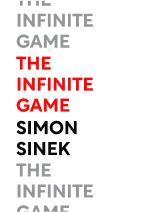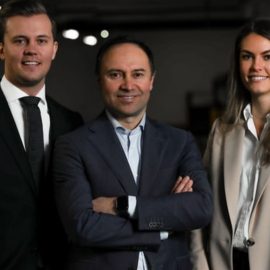

This article is an excerpt from the Shortform book guide to "The Infinite Game" by Simon Sinek. Shortform has the world's best summaries and analyses of books you should be reading.
Like this article? Sign up for a free trial here .
How does team trust factor into the infinite mindset? What are the main tell-tale signs that the team members in your organization trust one another?
According to Simon Sinek, trusting teams are the second part of developing what he calls “the infinite mindset.” A trusting team is a team made up of people who feel safe around each other—safe expressing their feelings, asking for help, talking about problems, and admitting to mistakes.
Here is what team trust looks like in an organization and what happens when it’s missing.
The Importance of Team Trust
According to Simon Sinek, trusting teams are the glue that holds it all together. On a trusting team, workers know that their bosses and colleagues will support them through errors and will offer help in a non-judgmental way when asked. Thus, they feel safe being honest.
Conversely, on a non-trusting team, people do not feel comfortable showing vulnerabilities and often feel compelled to lie, hide mistakes, and fake expertise rather than ask for help. In such an environment, problems in an organization are ignored or hidden instead of fixed. After some time, these problems can build up and can be much harder to address.
| The Center for Creative Leadership (CCL) published a report in 2017, prior to Sinek’s book, that advances many of the same philosophies on trusting teams. They define trust as “the bridge between the business need for results and the human need for connection.” Like Sinek, the report notes that trust is a key element in a properly functioning organization—when workers trust each other they unite towards a common goal, take risks with their thinking, and communicate openly. In the absence of trust, workers compete, hoard information, and don’t advance new ideas. Without trust, a corporate culture defaults to the lowest common denominator of behavior and is unable to achieve anything truly meaningful. The CCL notes that when they first published research on trust in 1999, it was considered a “soft” subject and not taken seriously. However, more recently, people have grown aware of the importance of trust and of the fact that teams without it don’t perform well. They recommend that leaders turn to trust-building programs if they sense certain problems in their team, such as a lack of enthusiasm, a reluctance to speak up, intra-team competition, or an attachment to the status quo. Each of these things may indicate a feeling of insecurity or a lack of connection between team members. |
Balance Performance With Trust
Sinek notes that infinite-minded leaders recognize that sometimes the best person for a job is not necessarily the highest-performing candidate. High performance is a reflection of competence, but trustworthiness is a reflection of character, and character can be a better indicator of a quality employee—one who contributes to the organization, elevates her colleagues, and helps to make everyone do their jobs better. A team full of high-skill but low-trust members may become a group of self-serving individuals who never pull together in a meaningful collaborative way but instead, hoard information, take credit for others’ efforts, and avoid accountability.
Sinek points to the recruiting practices of the U.S. Navy SEALS to underscore these principles. Sinek explains that the SEALS measure candidates against both performance and trust. They will not accept a candidate with high performance markers but low trust markers, as these people tend to be narcissistic, self-serving, and negative towards the other members, which ultimately hurts the cohesion and performance of the team. They will sooner select people with medium, or even low, performance markers if they have high trust markers, rather than the reverse of high performance markers but low trust.
| How to Balance Competence With Character Ray Dalio, billionaire founder of hedge fund Bridgewater Associates, discusses how to balance character and performance in his book Principles and comes to a slightly different conclusion than Sinek. He advises that great people have both excellent character and excellent skills, and if one of those elements is missing, your organization can suffer. A person with great skills but poor character won’t align with your company’s mission and will work to benefit their own goals, while a person with great character but low skills won’t advance the mission of the company effectively, even if they’re wonderful people to be around. Dalio allows for less flexibility than Sinek does when it comes to balancing these qualities. He advises only hiring people with high markers of both character and skill. Sinek’s theories here might align more realistically with the needs of managers faced with hiring decisions in the absence of perfect candidates. Importantly, Sinek doesn’t advise hiring people with low capabilities—he’s advocating for considering people with medium skills over people with high skills, if the lesser-skilled person has significantly more character. |
Create a Safe Space
Sinek maintains that trust comes from the top down. Leaders must show their team members that they value and trust them and must work to establish a culture in which team members trust each other.
- Listen to their concerns and take those concerns seriously: If there are ongoing issues with workplace safety or scheduling, address them. Employees must trust that you have their best interests at heart before they can trust your leadership or, by extension, your team.
- Encourage communication: Proactively establish communication protocols that allow people to voice concerns to you without repercussions. Eliminate any feelings of fear they may have about speaking up.
- Support inter-team communication: Encourage your team members to listen respectfully to each other’s concerns. You might do this through training seminars or regular meetings. Encourage them to form friendships with each other and to open up on a personal level, which can in turn help them work together on a professional level more smoothly.
- Identify high-trust team members: When hiring, it can be difficult to figure out a person’s character because it is less easily quantified than her performance is. However, on an existing team, it’s easy to identify the person everyone trusts. Make sure that person feels valued for her contributions.
- Identify low-trust members: It’s also easy to identify the low-trust team member—she’s the one everyone considers “the asshole.” Make sure this person doesn’t infect your team with toxicity. Coach her to develop better interpersonal skills. If she proves uncoachable by resisting feedback and being unwilling to change her attitude, the best course of action may be to remove her from the team.
| Another View on How to Build Trusting Teams Many management experts agree with Sinek’s emphasis on the importance of trusting teams. For example, Kim Scott, CEO coach and New York Times bestselling author, discusses building trusting teams in her book Radical Candor, which explores how to improve relationships with people you manage. Her recommendations include: Granting your team members autonomy, allowing them to feel empowered to make decisionsSharing details of your personal life with them, while being aware of what boundaries you shouldn’t crossBeing open to new perspectives by respecting differing opinions and values. While Sinek addresses each of these aspects of building trusting teams, Scott adds another element: self-care. She says that to build a trusting team, you must start by making sure you’re bringing your best self to the situation, because if you’re caught up in stress, either at home or at work, you won’t deal with challenges as efficiently as you would if you have a calm, clear mind. To prevent stress from building up because of friction between your personal and professional lives, Scott advocates that you think of your personal and professional spheres not as two separate existences, but as integrated pieces of your life. This way, if you need to, for example, meditate at home, you’ll see that it contributes to your work life as well as your private life. Similarly, if you’re excited about a work project, you can share that enthusiasm with your family and it will enrich your home life. She also advises that you schedule time for self-care so that it doesn’t get lost in the shuffle of your day—if you tend to skip your morning workout because you’re too busy, put it on your calendar as if it’s a meeting. |

———End of Preview———
Like what you just read? Read the rest of the world's best book summary and analysis of Simon Sinek's "The Infinite Game" at Shortform .
Here's what you'll find in our full The Infinite Game summary :
- Why businesses who see the game as finite don't survive
- How to develop an infinite mindset that will put you and your organization on a path for long-term success
- How the purpose of business is changing






